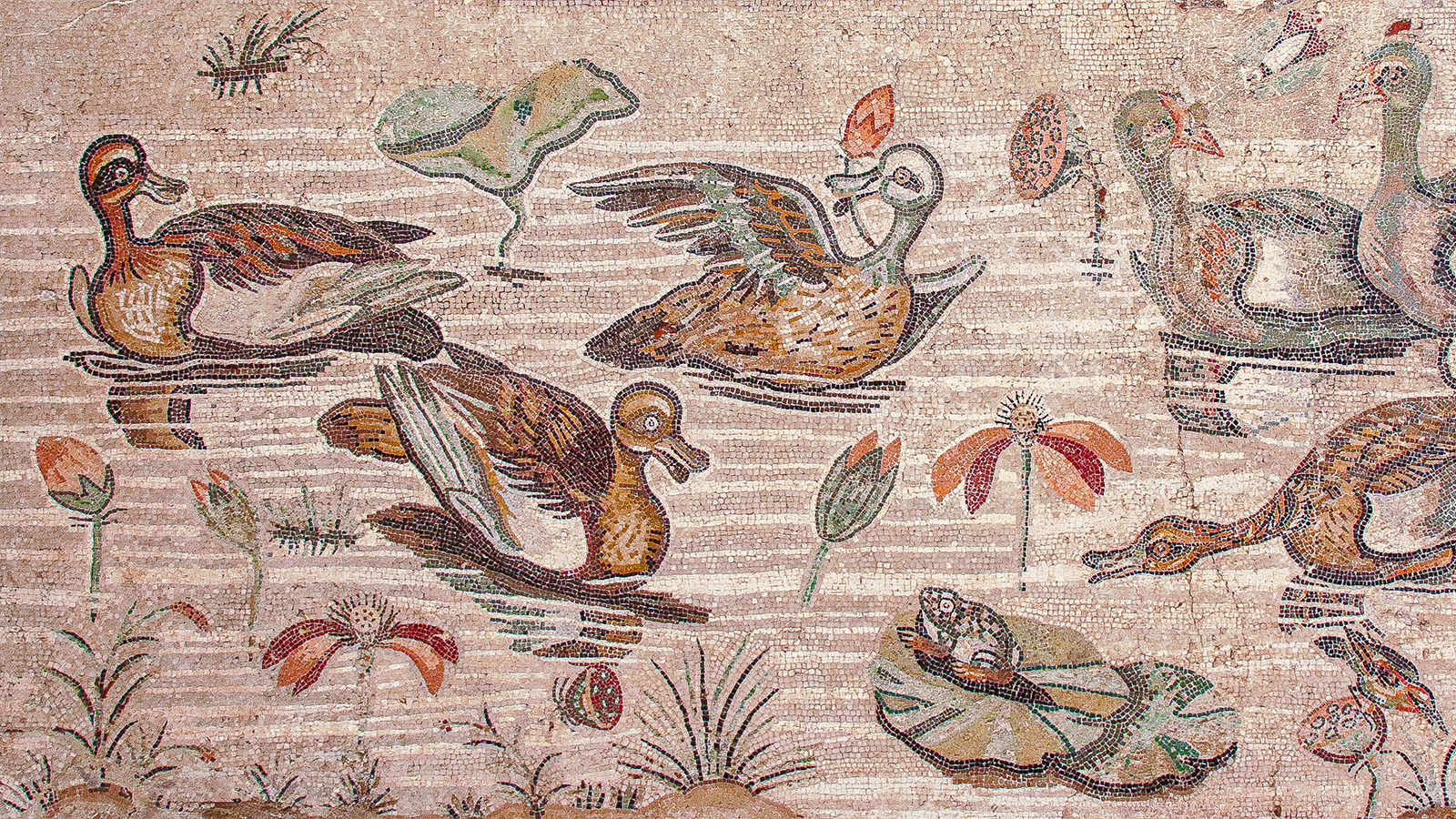Approaches to the Roman Environment

Nilotic scene found in the House of the Faun in Pompeii, ca. 100 BCE
Download a PDF of the flyer for the event!
The impact of the Roman Republic and Empire on the planet was enormous, in terms not just of culture and politics, but also environmental change. The vast scale of production and consumption reshaped landscapes by clearances and new crop cultivation, and wood-burning technologies, and the huge scale of metalworking left traces in the planet’s atmosphere. At the same time, shifts in what was cultivated and how natural resources were exploited generated new ideas about nature, agriculture, and human relationships with the environment. The natural world, and contemporary understandings of it, were transformed by military expansion, and thinking about nature and the diversity of the Mediterranean informed political discourse as well as agronomics.
Recent scholarship has identified key turning points in the cultural history of the environment around the early imperial period and has called into question the role played by climate change as a factor in the rise of Rome. This afternoon Conversations/Conversazioni event will consider, through interdisciplinary means, a variety of approaches to the Roman environment and natural world c. 200 BCE–c. 600 CE. We aim to revisit familiar questions through the consideration of emerging data for the paleoenviroment and new excavations, as well as evolving thinking about how the environment shapes history.
All are welcome.
This event, to be presented in person at the Academy and streamed online, is open to the public.
The Helen Frankenthaler Foundation generously supports Conversations/Conversazioni at the American Academy in Rome.
Speakers
Ria Berg, Institutum Romanum Finlandiae
Roman Trees and Constructions, Iconography and Topography
Roald Dijkstra, Radboud Institute for Culture and History
Does the Wind Blow Wherever It Pleases? Weather in the Late Antique Imagination
Claudia Minniti, Università di Roma, La Sapienza
Gli animali dalla parte dell’uomo. Studi di archeozoologia da Roma / Animals on the Side of Man. Studies of Zooarchaeology from Rome
Jean-Philippe Goiran, Université Lyon
The Ancient Harbours of Portus and Utica: The Delta-Port Relationship
Roberto Ragno, Università di Bari
Tackling Uncertainty in Italian Agricultural Practices During the 1st Millennium CE
Peter Sarris, University of Cambridge
LALIA or La La Land: What Difference Does It Make?
Jessica Venner, School of Advanced Studies, London
Opportunistic Gardens and Environmental Adaptation in the Final Years of Pompeii
Concluding remarks: Angela Trentacoste, British School at Rome.
For access to the Academy, guests will be asked to show a valid photo ID. Backpacks and luggage with dimensions larger than 40 x 35 x 15 cm (16 x 14 x 6 in.) are not permitted on the property. There are no locker facilities available. You may not bring animals (with the exception of seeing-eye/guide dogs).
The Academy is accessible to wheelchair users and others who need to avoid stairs. Please email us at events@aarome.org if you or someone in your party uses a wheelchair or other mobility devices so that we can ensure the best possible visitor experience. If you are someone with a disability or medical condition that may require special accommodation, please also email us at events@aarome.org.